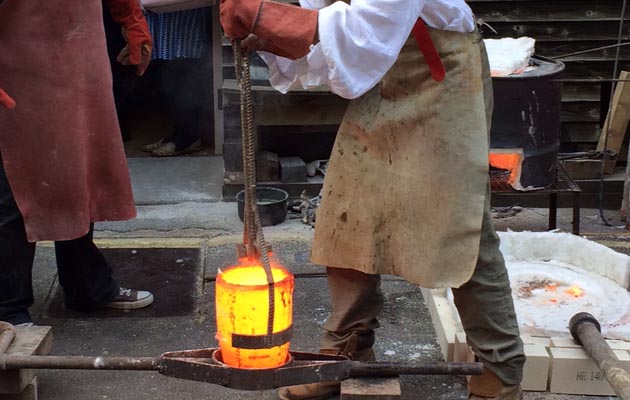If you’ve been to Marble Arch in London, or Ascot or Goodwood racecourses in the past few years, you’re likely to have admired the giant sculptures of horses’ heads by equestrian sculptor Nic Fiddian-Green.
One of his most famous pieces is “Still Water” at Marble Arch — a 33ft high bronze.
The sculptor has become known for creating colossal horse’s heads inspired by the Parthenon Horses of Selene, Goddess of the Moon, which he first saw as an art student.
“It’s always been about the horse,” he says.
“For me the horse is the only animal. I first became inspired when I say the sculpture of Selene at the British Museum — it really captured me and I’ve had an ongoing fascination since. The horse keeps me obsessing and working.”
The ‘lost wax’ technique
Nic, who is based in Godalming in Surrey, gets up early and starts work at around 5am each day.
“I work as much as I can and like to start early when it’s quiet,” he says.
“Where we’re based there’s open fields and silence, which is a good environment to work it.”
The process of making a sculpture naturally varies on the size of the work, but takes anything from a couple of weeks to six months.
“I’m normally in the studio for two to three weeks working on a clay version of the model,” he says.
“I then take a mould off that and paint wax on the inside of the mould.”
A ceramic shell is then put around the wax and both are fired.
“The wax and shell goes into the furnace,” adds Nic. “The wax then melts out, leaving the shell, which we then pour the melted bronze into. This is called the lost wax technique and creates an accurate reproduction of the original clay model.
“The shell is then removed, leaving the bronze.”
The bronze is then finished, which according to Nic “can take a while”, depending on the size. Larger pieces need panels welding together, making sure joins are smooth.
Continued below…

7 bits of equestrian art we’re lusting after
How about perking up your walls for 2015 with our pick of equestrian art?
The bronzes
“I chose bronze as you need a material that physically stands up when making sculptures like mine,” adds Nic.
“I’m a traditionalist, turning clay shapes into something that lasts. And with bronze you can create beautiful colours and patterning as well.”
Nic estimates he’s made around 2,000-3,000 horses head sculptures during his career, working on around 100 a year.
“I learnt the process when I first set up my studio in 1985,” he says.
His favourite piece is the Greek-inspired Artemis, which stood at Goodwood racecourse.
The 30ft high sculpture was installed on the Goodwood Estate in time for the 2010 Glorious Goodwood meeting. It weighed four tonnes and was driven up a steep track before being reversed into place by a 60ft flatbed truck.
“With pieces this size it’s interesting as you need to pay close attention to scale, balance and proportion. It’s a different challenge to the smaller pieces,” he adds.
“I’m also proud of the Marble Arch statue, as it’s seen daily by the public, which is always a good thing.”
Nic currently has an exhibition running at Sladmore Contemporary, 32 Bruton Place, London W1J 6NW. It runs until 31 July.
Nic is currently in Italy, for his new exhibition “Inspired in Italy” at Castello di Reschio, Perugia, Umbria.
For more information visit: www.sladmore.com






